#Armillaria mellea
Photo



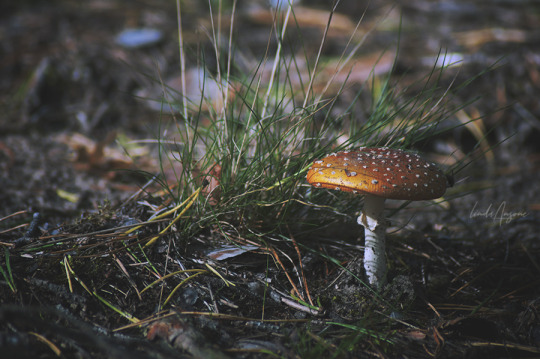
#woods#woodlands#forest#forestcore#mushrooms#fungi#honey fungi#mushroom cluster#armillaria mellea#amanita muscaria#fly agaric#moss#pine trees#latvia#nature#nature photography#original photographers#photographers on tumblr#1k#2k
3K notes
·
View notes
Text


Honey mushrooms (Armillaria mellea) growing on a tree
#honey mushroom#honey mushrooms#armillaria#armillaria mellea#mushrooms#mushroom#mycology#fungus#fungi#nature#parasitic mushroom#mushroom hunting#outdoors#hiking
135 notes
·
View notes
Text
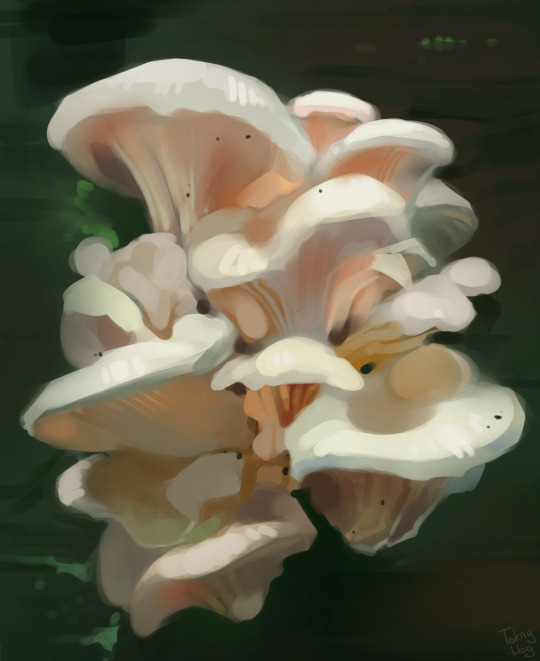


274 notes
·
View notes
Text
a freaky fungi fact !! :-)
up until 2022, the largest living organism in the world was thought to be a network of honey fungus.
a 2400 year old network of mycelium in oregon's blue mountains - nicknamed "humongous fungus" - was thought to be the biggest living organism in the whole world. this fungus occupied 2384 acres of soil (965 hectares), which is equal to nearly 4 square miles or 10 square kilometres.
many people do not realise that most of a fungus is actually underground in the form of mycelium !! think of it as the "roots" of the fruit body (mushroom).
this network has been able to survive over 2 millennia by parasitising the plant roots around which it grows. they are also able to grow shoestringlike structures to bridge gaps between food sources !!
unfortunately, this organism was overtaken by a giant patch of seagrass in june of last year, according to the guinness world records.
click here to learn more about the honey fungus :-)

[image description for above photograph : a picture taken in oregon of a cluster of fruit bodies from the "humongous fungus" mushroom network. they grow in a large group, covering a wooden stump & much of the forest floor. the mushrooms themselves are brown with round caps, white edges, & lighter brown stipes. they are surrounded by fallen leaves & moss in the foreground, while the background features tall trees. end iD]
#• finn's freaky fungi fact ^^ •#[armillaria mellea]#: honey mushroom :#: pipinky :#: honey fungus :#: pinky :#: stumpie :#: stump mushroom :#||#fungi#mushroom#fungus#mushrooms#cottagecore#earth#foraging#nature#forestcore#mycology#armillaria mellea#honey fungus#stump mushroom#stumpie#honey mushroom#pipinky#pinky#oregon#world record#fact#fun fact
102 notes
·
View notes
Text
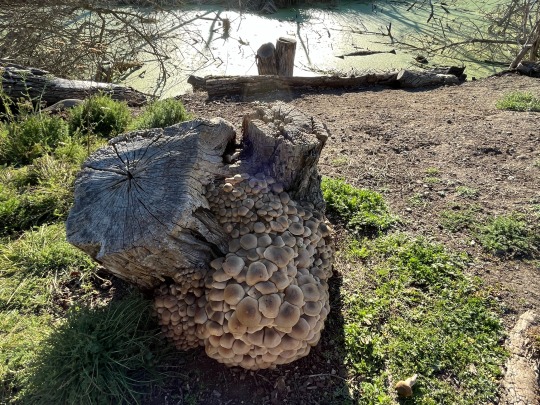


🍄😳
#can some fungi experts help me out#is this Armillaria mellea?#it overtaking#honey fungi#I wanted to touch it lmao 🤣#found#it wanted me to turn into it!#🍄#mushy overload#yummy#😉#nature#and all it’s glory#neat nature#fungus#fungi#Armillaria mellea#tree rot fungus#last of us#fungi identification
33 notes
·
View notes
Video
Vibrant Honey Fungus by Oliver Andrews
Via Flickr:
Honey fungus mushrooms sprouting amongst moss on an old tree stump, in Glapthorn Cow Pastures.
#armillaria mellea#autumn#autumnwatch#canon#canonuk#fungi#fungus#glapthorn#glapthorn cow pastures#honey fungus#mushroom#mushrooms#nature#nature reserve#northamptonshire#northants#outdoors#toadstool#toadstools#wildlife trust#wildlife trusts#wood#woodland#woods#Peterborough#England#United Kingdom#flickr
5 notes
·
View notes
Photo
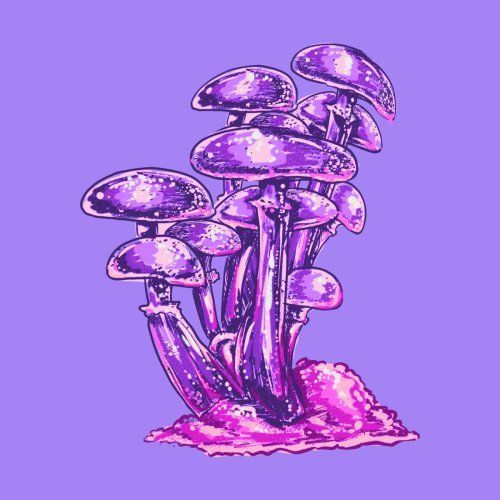
The Mushroomcore Collection
#mushroom core#mushrooms#hypholoma fasciculare#hypholoma fasciculare mushrooms#pastel art#pastel aesthetic#mushroomcore aesthetic#mycology#mushroom hunting#mushroom art#myart#my art#Armillaria mellea#Armillaria mellea mushrooms
4 notes
·
View notes
Text
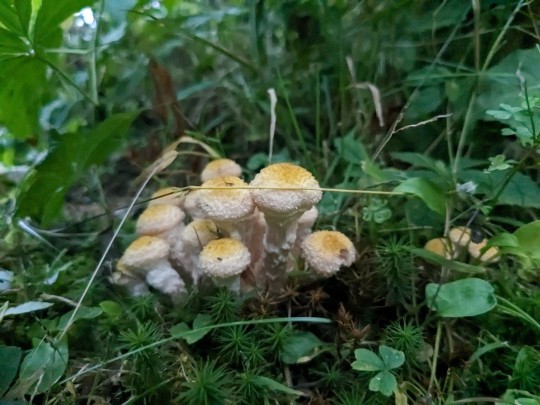

same honey's, different day
0 notes
Text

Armillaria mellea, honey fungus- watercolors and ink, 2022
0 notes
Photo

Honey Fungus Armillaria mellea
#fungi#fungus#mycology#mushroom#mushrooms#cottagecore#goblincore#dirtcore#fairycore#nature#forest#forestcore#toadstool#toadstools
2K notes
·
View notes
Text
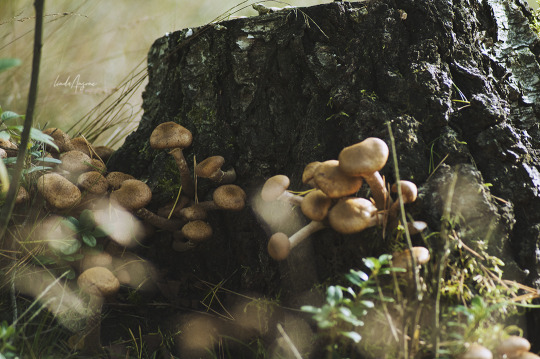


Honey agaric
#honey fungi#honey agaric#armillaria mellea#mushrooms#fungi#mycology#mushroom photography#forestcore#forest floor#naturecore#nature#nature photography#original photographers#photographers on tumblr#mushroom cluster
955 notes
·
View notes
Text


Shrimp of the woods was long thought to be the result of honey mushrooms parasitizing Entoloma abortivum, and in the past few decades we've thought maybe it's the opposite - that Entoloma is parasitizing Armillaria mellea. I'm not sure what the research is saying most recently (please enlighten us if you are aware of the latest research), but the woods where I found these shrimps had no fruiting honey mushrooms and plenty of Entoloma abortivum.
106 notes
·
View notes
Text
Братцы Опятки.
Опёнок осенний, опёнок настоящий (Armillaria mellea).
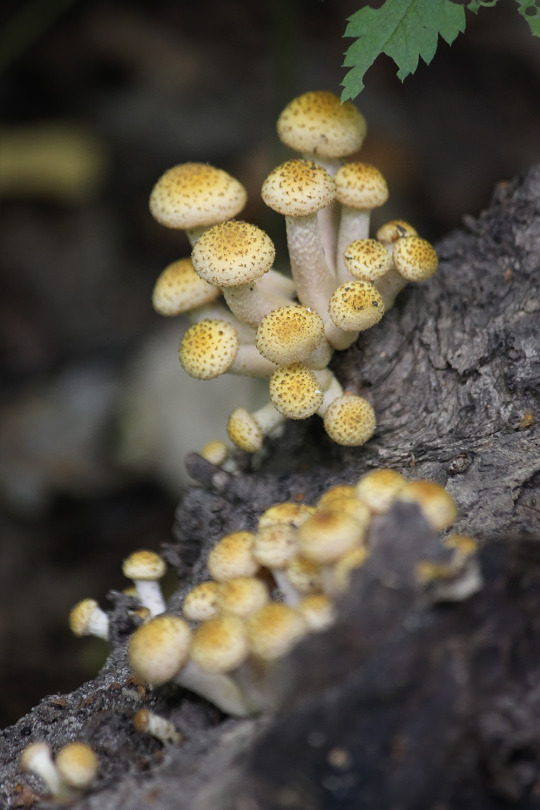

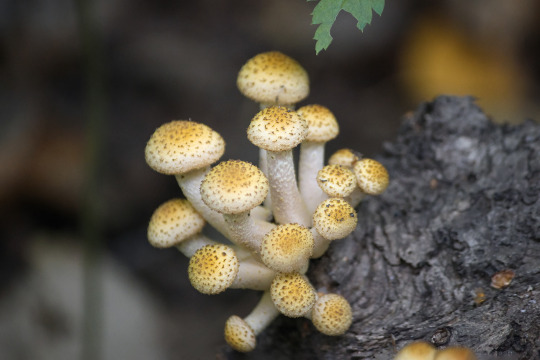
56 notes
·
View notes
Note
Hihi :3 Could u pls do the honey fungus for FOTD? Thank u! 🍯🐝
FOTD #031 : honey fungus! (armillaria mellea)
the honey fungus (AKA stump mushroom, stumpie, honey mushroom, pipinky or pinky) is a bioluminescent basidiomycete fungus in the family physalacriaceae. it is found across the northern hemisphere as a plant pathogen !!
the big question : can i bite it??
it depends - for some people it can cause allergic reactions, but it is generally edible & choice.
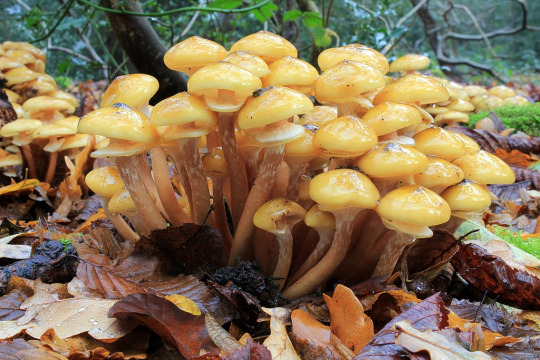

a. mellea description :
"the basidiocarp of each has a smooth cap 3 to 15 cm (1 to 6 in) in diameter, convex at first but becoming flattened with age often with a central raised umbo, later becoming somewhat dish-shaped. the margins of the cap are often arched at maturity & the surface is sticky when wet. though typically honey-coloured, this fungus is rather variable in appearance & sometimes has a few dark, hairy scales near the centre somewhat radially arranged. the gills are white at first, sometimes becoming pinkish-yellow or discoloured with age, broad & fairly distant, attached to the stipe at right angles or are slightly decurrent. the stipe is of variable length, up to about 20 cm (8 in) long & 3.5 cm (1+1⁄2 in) in diameter. it is fibrillose & of a firm spongy consistency at first but later becomes hollow. it is cylindrical & tapers to a point at its base where it is fused to the stipes of other mushrooms in the clump. it is whitish at the upper end & brownish-yellow below, often with a very dark-coloured base. there is a broad persistent skin-like ring attached to the upper part of the stipe. this has a velvety margin & yellowish fluff underneath & extends outwards as a white partial veil protecting the gills when young. the flesh of the cap is whitish & has a sweetish odour & flavour with a tinge of bitterness."
[images : source & source]
[fungus description : source]
"these guys look so cute but are actually *insane*, so thanks for the request !!"
#• fungus of the day !! •#[armillaria mellea]#: honey fungus :#: stump mushroom :#: stumpie :#: honey mushroom :#: pipinky :#: pinky :#031#||#fungi#mushroom#mushrooms#cottagecore#earth#fungus#forestcore#nature#foraging#mycology#armillaria mellea#honey fungus#stump mushroom#stumpie#honey mushroom#pipinky#pinky#fotd#fungus of the day
31 notes
·
View notes
Text
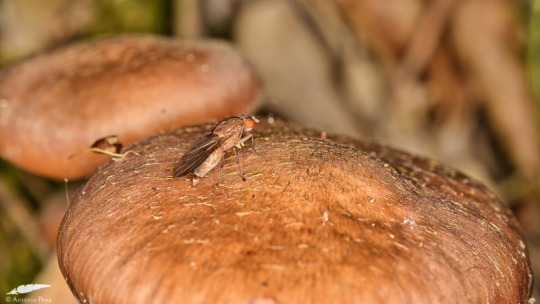
Diptera on Honey Fungus - Díptero em Armillaria mellea
Sintra/Portugal (23/11/2023)
[Nikon D850; AF 105mm Micro-Nikkor F2,8 with Circular Flash Nissin MF 18; 1/250s; F16; 400 ISO]
12 notes
·
View notes
Video
Sunlit Honey Fungus by Oliver Andrews
Via Flickr:
Warm autumn sunlight catching the tops of newly emerging honey fungus mushrooms, pushing their way through a layer of moss on an old tree stump, at Glapthorn Cow Pastures.
#armillaria mellea#autumn#autumnwatch#canon#canonuk#fungi#fungus#glapthorn#glapthorn cow pastures#honey fungus#mushroom#mushrooms#nature#nature reserve#northamptonshire#northants#outdoors#toadstool#toadstools#wildlife trust#wildlife trusts#wood#woodland#woods#Peterborough#England#United Kingdom#flickr
3 notes
·
View notes

